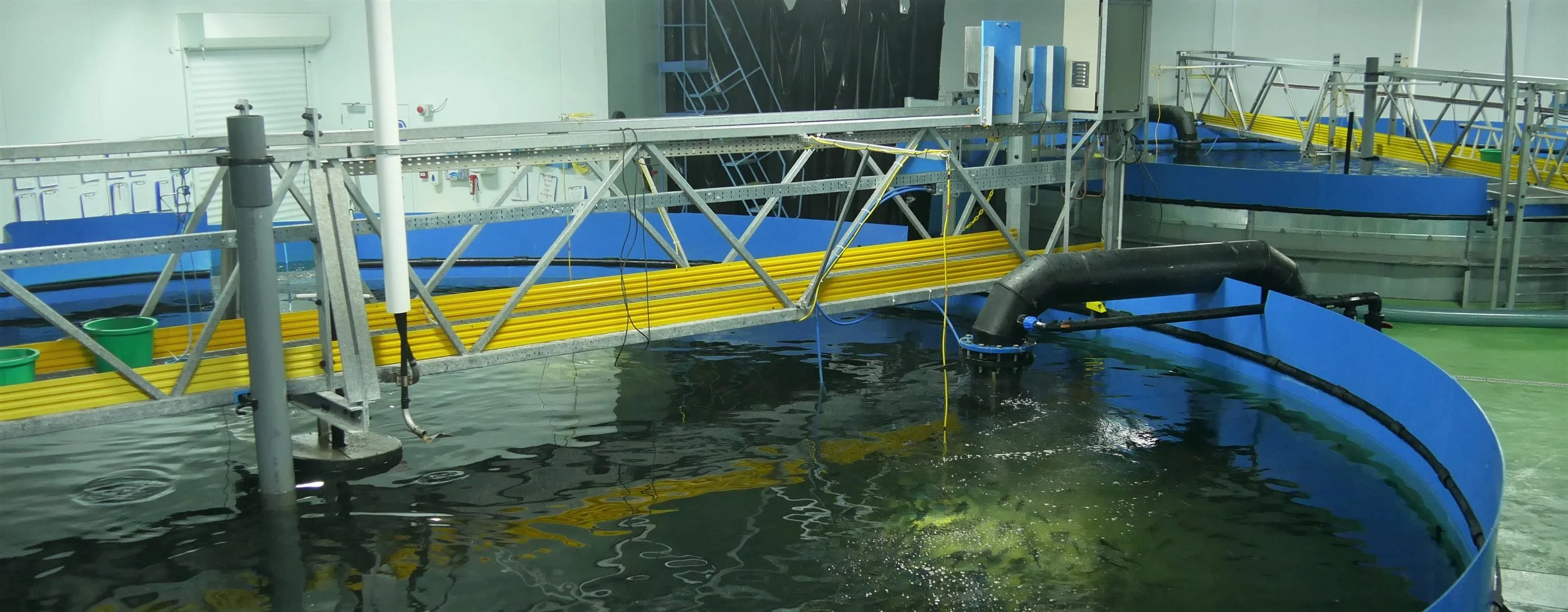In 2014 Stirling Aquaculture produced a Review of Recirculation Aquaculture System Technologies and their Commercial Application” for the Scottish Development Agency, Highlands and Island Enterprise. As this is a relatively rapidly developing field, they commissioned an update to the report in 2018 which has now been published on the HIE Website.
The update report was compiled by the original authors - John Bostock, Francis Murray and David Fletcher (RAS Aquaculture Research Ltd.) with additional inputs from Maddi Badiola (Meet-Energy and IoA Alumni) under a contract with Ekos Limited. It primarily focuses on aquaculture developments involving recirculated systems in Scotland and prospects for further investment and output. This leads to an emphasis on salmon as the most economically important cutured species in Scotland although reference is made to developments with other species both in Scotland and internationally. The Executive Summary is quoted below.
The leading salmon aquaculture companies are all making strategic investments in RAS, mainly for juvenile production. This has been a trend over the past 20 years and has contributed substantially to technology development. The established industry has therefore demonstrated a willingness to adopt RAS technologies where they perceive a strong business case, such as enabling more consistent year-round supplies of juveniles.
Parallel to the strategic adoption of RAS by existing salmon producers has been a series of RAS-based grow-out projects based on a mix of optimistic technology promises and ethically driven enthusiasm for land-based farming drawing in investment from equity investors as well as government and other non-government organisations. Most of these have experienced a range of technical, financial and market problems and have either failed completely or are operating at a loss. Nevertheless, there is substantial momentum and lessons are being learned and technology is developing at a faster rate than when previously assessed in 2014. The lack of investment in grow-out RAS by established producers, notably salmon companies already culturing smolts in RAS, may reflect their greater understanding of market and economic fundamentals and/or reluctance to invest in disruptive technology given their heavy investments in cage grow-out production. More encouragingly, entry into the RAS sector by major water and sanitation companies such as Veolia, capable of more standardised technology development suggests previous barriers will be overcome.
The immediate interest of the Scottish salmon industry is in strategies to reduce the impact of sea lice and other disease problems. One element of this is to reduce the time the fish are in sea cages through the stocking of post-smolts of between 250g and 1 kg in weight. It appears likely that land-based RAS could provide an economic means of achieving this, although sea-based closed containment systems are also being investigated as a potential alternative. Land-based RAS are also being used for cleaner fish production as another part of the sea lice control strategy.
RAS offers opportunities for new species development in Scotland, with examples including sturgeon (caviar), yellow tail, sole, tropical shrimp, and spiny lobster. However, these are generally high value products for which domestic markets may be more limited
If already planned investments in salmon grow-out RAS go ahead in the USA, China and other important export markets for Scotland, long-term market opportunities are likely to be affected. A more substantial risk to the Scottish industry in the short to medium term could be a further decline in social license necessary to achieve ambitious growth-targets due to perceived conflicts with environmental and conservation targets. For this reason, combined with steadily maturing technology and new species opportunities, it is anticipated that aquaculture production using recirculated aquaculture systems will gradually expand in the coming years.
Examples of current or recent salmonid RAS projects around the world
The reports can be downloaded from the HIE website for Food and Drink or directly viat the following links:
2014: Review of Recirculation Aquaculture System Technologies and their commercial application



